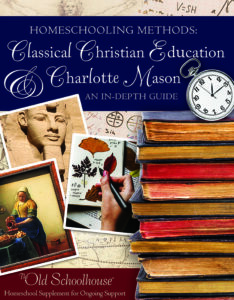Biblical Classical Education Center
If you’re a Classical educator looking to utilize the resources of SchoolhouseTeachers.com, you’ve come to the right place. This Biblical Classical Education Learning Center will direct you to the best courses for the Classical approach to educating your children. From Beginning Latin to Classical Archaeology, SchoolhouseTeachers.com can make your journey a little smoother.
The Classical Method of Education is a thorough and extensive program of study for students from preschool through high school. This model of education divides learning into three age-appropriate stages called the trivium. In each stage, the method of learning coincides with children’s developing minds and their natural learning bents.
- The grammar stage, where memorization is key
- The dialectic stage, where middle-grade students begin to analyze and interpret the information they have learned
- The rhetoric stage, where older students learn to convey written and spoken information with authoritative originality
As always, SchoolhouseTeachers.com lets you choose the courses that fit the needs of your Classical students.

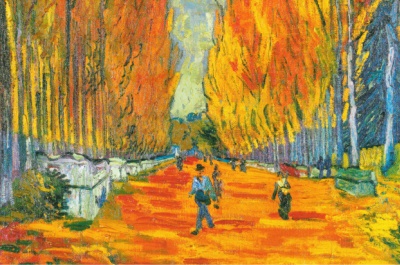
Art
- Learning About Art (Preschool–Elementary)
Learning About Art is a fun series of ten lessons specially designed to teach preschoolers and early elementary students about art. They’ll look at Audubon, Homer, Rousseau, and many other masters and learn about things like lines, movement, shapes, and more. They’ll also have a chance to make their own creative pictures. Much guidance is given, so there is no former knowledge of art required to present this class.
- Discovering Art History (Elementary)
Discovering Art History helps students learn to group paintings or other artwork by style, subject, or artist. Historical styles of art are presented, featuring great masters like da Vinci, Monet, and Cezanne. Students will also have a chance to practice each style learned.
- Elementary Art (Elementary)
Elementary Art is a series of units designed for early elementary ages. Each unit focuses on a different area of art such as famous artists, color theory, primary colors, and more. Featured artists include Michelangelo, Rembrandt, Picasso, and more.
- Everyday Easels (Elementary–High School)
Everyday Easels introduces art appreciation in the context of other subjects that a student may enjoy more. There are more than 75 unit studies of famous artworks presented in either 5-day or 10-day units. Each Everyday Easels unit begins with a brief study of the art itself. Then it approaches the art from different angles, including history, vocabulary, geography, writing, Bible, and science.
- Unit Studies: All About Artists (Grades 1–3)
- A Century of Art (Middle School)
Each lesson in A Century of Art explores the unique elements that contribute to the particular style, including the history, and introduces students to key artists of the time period. Each also includes an art project to familiarize students with the style. Numerous opportunities for students to explore one or more styles more deeply are provided.
- Studio Art for Teens (Middle School–High School)
Sharon Jeffus of Visual Manna showcases the work of her teen artists who are pursuing art as a ministry. More than forty lessons are available in this ongoing art study. Each lesson is designed to be done in a one- or two-week period. Lessons teach artistic skills through the study and imitation of the masters.
- Art & History: Interconnected (High School)
What did Michelangelo have to do with the Reformation? How did the Baroque period send the Pilgrims high-tailing it to the New World? Nothing happens in a vacuum. History affects art, and sometimes, art affects history. This course explores how world events have impacted art and how different artists communicate their message through their art.
- Art: The Timeless Treasure (High School)
Each lesson in Art: The Timeless Treasure discusses characteristics of the style; art, architecture, sculpture; artists and architects; and each lesson includes a wide variety of activities. Each also includes an art project to familiarize students with the style. Numerous opportunities for students to explore one or more styles more deeply are provided.

Bible
- Bible Study for Preteens (Elementary–Middle School)
The Bible Study for Preteens series is designed to help students grow deeper roots by studying God’s Word. Daily studies take students into the Old Testament through the lives of Rebekah, Ruth, Hannah, Nehemiah, Esther, Job, Daniel, and Jonah and begin the New Testament with a study of Lazarus’ sister Mary.
- The AMO® Program: Nurturing the Heart for God (Elementary–Middle School)
The AMO® Program: Nurturing the Heart for God uses Biblical and classic literature to cultivate a Christian worldview, sensibilities and character in two generations: the students and the adults who disciple them. This course includes two guides: The Book of Psalms (24 lessons) and Little House in the Big Woods (18 lessons plus a final activity).
- A Study of Extraordinary Women in the Bible (Middle–High School)
Through Scripture reading, comprehension questions, reflection questions, and a number of writing activities, this study helps girls and their moms study God’s Word together and grow in Godly character. There is a version for 6th-9th grade and a version for teens, both included.
- Apologetics: Creation vs. Evolution (Middle School–High School)
The Apologetics: Creation vs. Evolution class looks at more than 150 different reference materials examining the claims of evolution and Creationism. Each weekly lesson includes a video (approximately 30-40 minutes long) with study worksheets to complete. At the end of the course, there is also a test. Answer keys for the worksheets and the test are provided for parents. This course is designed for students 12 and older, and families are encouraged to take the class together and discuss what is being learned.
- Creation Apologetics (Middle–High School)
Creation Apologetics is a special series of videos from Creation Ministries International that draws on biology, chemistry, nuclear physics, astronomy, genetics, geology, history, and more to provide a defensible understanding of a belief in Biblical Creation. Most of these videos are designed for older middle school students and high school students. Some advanced material is also included. This class is a wonderful class to take as a family, as it is sure to spark many valuable discussions.
- Creation Worldview (Middle–High School)
This self-paced apologetics class is designed to help middle school and high school students understand how to defend their faith and the scientific case that is in harmony with God’s Word.
- Discovering Our Amazing God (Middle–High School)
Would you like to help move your students from Biblical knowledge to spiritual application? The main focus of this study is to help students learn to love God and deepen their relationship and fellowship with Him. This essential study helps students strengthen and repair their spiritual foundations before they try to discover who they are in Christ.
- Advanced Apologetics (High School)
This in-depth apologetics course begins with an introduction to apologetics and then moves through traditional approaches to apologetics, general apologetics, foundations for apologetics, philosophical apologetics, historical apologetics, classical apologetics, and advanced apologetics.
- Introduction to Worldview and Philosophy (High School)
Presented from a Biblical worldview, this course introduces students to Biblical and current worldviews and philosophies. It is designed to help students recognize their own worldview and philosophy and equip them to compare, develop, and defend a position that is reasonable, realistic, and theologically sound. Students trace the history of western philosophy from its Greek origins through independent research, using the material and links provided.
- Reading Religious Affections (High School)
This advanced class challenges students to dig deeper into Scripture while examining the classic work Religious Affections by Jonathan Edwards. Through twenty units, students examine the arguments raised in the book and encounter numerous questions and points for discussion.
- Schoolhouse Bible (Preschool–High School)
Our Schoolhouse Bible curriculum has a Bible reading guide for every grade, as well as Bible memorization passages. Preschool lessons introduce students to both the Old and New Testaments. A student who follows the curriculum every year from kindergarten through twelfth grade will have studied the Bible through five times. Additional activities, which vary by grade level, help students internalize and apply the Word of God.
- Study of Original Sin (High School)
This advanced class challenges students to go deeper into Scripture while examining the classic work The Great Doctrine of Original Sin Defended by Jonathan Edwards. Through twenty-four units, students examine the arguments raised in the book and encounter numerous questions and points for discussion. The class concludes with a comprehensive written assignment.

Drama and Speech
- Simply Shakespeare (Elementary–High School)
Bring drama to your homeschool with more than a dozen classic plays. This drama elective studies the works and world of Shakespeare alongside the Biblical truths that can be learned from each play. Units are organized by play or topic.
- Public Speaking (Introduction) (Middle School–High School)
This five-month introductory course teaches the basics of public speaking and the several types of speeches. Students cover topics like impromptu speaking, expository speeches, speaking on current events, interpretative speeches, and how to write a memorable message. These help build the skills and confidence needed for public speaking.
- Advanced Public Speaking (Middle School–High School)
This is an eighteen-week class designed for students who want to gain more instruction in public speaking and the evaluation of speeches. This course requires the student to study various types of speeches and both write and deliver several of his or her own. It is recommended that the student complete the Introduction to Public Speaking class before moving into this class, as it will build on some of the concepts learned.

Electives
- Fun with Cooking (Elementary)
Fun with Cooking is an exciting look at cooking basics with an emphasis on nutrition, food safety, and variety. Many lessons include a design component to help sharpen critical thinking skills. Numerous recipes are included.
- Wildlife Adventures (Elementary—Middle School)
Fifteen fun, weekly lessons introduce animals from alligators to jellyfish. Bible reading, Scripture memorization, copywork, vocabulary, spelling, geography, math, activities, crafts, coloring pages, crossword puzzles, and notebooking are included.
- Photography (Elementary—High School)
Thirty weekly lessons teach students how to see the way their camera “sees” and then to use that knowledge to create a recipe for the perfect picture. Lessons include such topics as camera functions, creative composition, photo editing, and more.
- Photography Challenge (Elementary—High School)
Forty-eight weekly photography challenges get homeschool students of all ages and skill levels thinking outside of the box and give them some creative springboards to capture their best shots yet. Each challenge can be tried again and again in any order as students’ photography skills improve.
- Heritage Crafts (Family)
Heritage crafts are life skills that people in the past used to create art and live productive lives. Students learn about these life skills by making corn husk dolls, writing with quills, making ink, drying apples, making candles, and more. This class is best done as a family, as some portions of the crafts require parental supervision.
- Career Exploration (Middle School—High School)
This eight-week course is designed to help your student consider the world of career possibilities. From seeking God’s will and inventorying their talents to understanding career clusters and job shadowing, Career Exploration helps your teens prepare for whatever future God has designed for them.
- Filmmaking (Middle School—High School)
Thirty-three weekly lessons take a detailed look at various aspects of the Christian filmmaking industry, including choosing the right camera, lighting, audio, production and post-production, and finding God’s stories.
- Introduction to Graphic Design (Middle School–High School)
Introduction to Graphic Design is an excellent guide to the basics of graphic design. It teaches students how to recognize quality graphic designs in the products they see and interact with every day, what makes certain designs stand out, how to design an eye-catching ad that communicates a specific message to a target audience, and what types of jobs are available for graphic designers today.
- Introduction to Architecture (Middle School–High School)
This course covers basic components of architecture, as well as various structures, including skyscrapers, bridges, cathedrals, homes, castles, and sports arenas. Students will learn about aspects of each structure, including the marvel of its inception at that particular point in history, its function, the architects (where applicable) responsible for its creation, and the science behind its stability.
- Personal Finance in Bite-Size Chunks (Middle School–High School)
Financial literacy is a subject we all know is important but most of us aren’t comfortable teaching. Personal Finance in Bite-Size Chunks was created to change that. The entire course is created to help parents and teachers explore these topics with their teens so they can start to build a solid foundation for their finances that will serve them throughout the rest of their lives.
- Starting a Micro Business (for Teens) (Middle School—High School)
This course looks at what can be learned from starting a micro business, how to find your ideas and make a business plan, how to market your business, and more. Learn what a micro business is and the steps it takes to start one.
- Friendly Driver’s Ed (High School)
Friendly Driver’s Ed is written primarily for US-based students to supplement their state’s driver’s handbook. The course also covers important topics beyond the state handbook: the science of how a car works, safety considerations in all sorts of situations, routine car maintenance, and ownership concerns. Note: In all cases, the state driver’s handbook is the governing document in all legal matters. Please check your state’s regulations about any required state-approved driver’s education program.
- Psychology: Learning About the Mind from a Christian Perspective (High School)
With this course, your teen can study psychology without being inundated by the secular philosophies so prevalent in today’s culture. Learn the history of psychology, the link between biology and the mind, and the major areas of study in this introductory Psychology course taught from a Christian point of view.

Foreign Languages
- Beginning Latin (Elementary–High School)
Beginning Latin is a full-year course designed to be taken by children of any age. Twenty-four lessons are designed to last a full year and introduce your students to nouns, verbs, verb tenses, adjectives, and adverbs, as well as noun declensions. Videos, worksheets, quizzes, and answer keys are included.
- Latin II (Middle School–High School)
Latin II is for middle and high school students who have taken Beginning Latin. This twenty-six week Latin homeschool curriculum includes a video or PowerPoint with audio option that covers advanced topics, such as first, second, and third conjugations; adjective and noun declensions; irregular verbs; and more. Quizzes and answer keys are also included.
You might also consider:
- Elementary Spanish (Elementary)
Thirty-four weekly lessons including video and printable worksheets provide an introduction to the Spanish language for elementary students. Video lessons teach good pronunciation, which is foundational to language acquisition. Basic skills are also presented, such as counting, dates, weather, seasons, animal names, colors, and more.
- Latvian (Elementary–High School)
This full-year Latvian course introduces students to the Latvian language, culture, and history through weekly video lessons and printable worksheets. It begins with the Latvian alphabet and then moves into words and phrases which are built upon as the year progresses. It is designed for children 4th grade and older and includes periodic review and tests.
- ASL Adventure (Introduction) (Middle School–High School)
ASL Adventure by Sandra Heflin is a 16-week course in American Sign Language, the third-most-used language in the United States. This class introduces students to ASL through videos and printable worksheets. Students have the opportunity to learn basic vocabulary and about the Deaf culture.
- Basic Conversational Korean (High School)
Basic Conversational Korean guides students through learning the Korean alphabet, as well as phonics, handwriting, vocabulary, grammar, conversational skill, and historical cultural facts. It uses 36 PowerPoint® presentations with audio material to help with pronunciation, along with printable worksheets, vocabulary lists, quizzes and exams, and answer keys. It may be taken as a one-year intensive program, or it may span two years of study.
- Spanish 1 (High School)
This high school Spanish course includes thirty-seven lessons plus quizzes and exams. It will cover a large amount of vocabulary and conversational phrases, indefinite articles, and verb conjugation. Audio files are included to teach correct pronunciation, and answer keys for all worksheets, quizzes, and exams are also included.
- Spanish 2 (High School)
This high school Spanish 2 course includes thirty-six lessons plus quizzes and exams. It continues synthesizing Spanish by combining a large amount of vocabulary and many different verb conjugations. It emphasizes what are considered 55 essential verbs with the goal of using these with ease by the end of the course. Audio files are included to teach correct pronunciation, and answer keys for all worksheets, quizzes, and exams are also included.

Geography
- All About Maps (Kindergarten–Middle School)
Maps are an integral part of geography. This course starts with basic map skills including directions and the compass rose and advances through a study of latitude and longitude, various types of maps, natural resources, how settlement and war have impacted political maps, settlements and land use, natural disasters, and natural hazards.
- Unit Studies: Geography: All About the World grades 1–8
- Geography of the Bible (High School)
Geography of the Bible is a series of seventeen videos that explores the ancient lands of the patriarchs, Israel at the time of Jesus, and the lands traveled to and written about in the epistles and Revelation. Through videos and worksheets, students will take a closer look at the lands of the Bible, the people who lived there, and the many incredible events that took place in that region that continue to shape our world today.
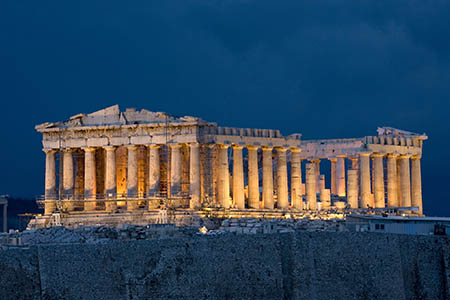
History
- Ancient History for Elementary (Elementary)
Lead your children on a journey through ancient history and explore the cultures of India, the Native Americans, Mesopotamia, Sumer, the lands of the Bible, Egypt, Greece, Rome, and China through thirty-six age-appropriate lessons that includes a wide range of activities and projects.
- Medieval to the Renaissance: Elementary History (Elementary)
This elementary history course covers approximately AD 476–1492, from the fall of Rome to the beginnings of exploration. Special focus is given to medieval Europe, China, Spain, and the Vikings as well as leaders of the Renaissance and Reformation.
- World History: Exploration and Colonization (Elementary)
Through thirty-six weeks of creative lessons about the Age of Exploration through the early 1700s, students will meet various ancient civilizations; learn about the expeditions of famous explorers; observe life in the early American colonies; and travel to Japan, India, and beyond.
- Ancient World History (Elementary–Middle School)
Through this study, elementary students meet the people of ancient Israel, Sumer, Egypt, China, Rome, Greece, Babylon, and more, covering the time period from Creation to AD 476. It includes readings, colorful illustrations, questions and activities, and it can be done as a single semester, or students can go deeper with a full-year schedule.
- Classical History (Elementary–Middle School)
Jennifer Courtney and the Classical Conversations team supply twenty-nine weekly lessons to help students explore ancient history from the first recorded civilizations through the fall of Rome. Various resources are included such as written lessons, reading assignments, videos, supplemental readings, and more.
- Renaissance History (Elementary–Middle School)
In this course, students learn about various aspects of the Renaissance, not only in Europe, but in Africa and Asia as well. The thirty-six-week study examines art, literature, science, history, and religion through hands-on projects, writing assignments, crafts, videos, notebooking pages, and even lapbooks.
- Classical Archaeology (Middle School–High School)
During this seventeen-week course, students dig deeper as they explore ancient sites such as the Great Theatre of Ephesus, or the plain of Marathon where the Athenians stopped the Persian invasion. Drawing on scholarly research as well as his own years in the field, the lesson designer shares insights, photographs, and resources to help students understand these ancient sites and learn from them today.
- Ancient History: Babylonian Life and Mythology (High School)
Babylon appears frequently in our study of history and the Bible. This class takes a closer look at this ancient empire through text-based lessons, maps, and more. Students learn who the ancient Babylonians were, what their lives were like, and what we can learn from the records they left behind.
- Classical Mythology (High School)
Classical Mythology is a high school class that looks at the history and development of Greek and Roman mythology and its continuing influence on our lives today in literature, movies, the arts, and more.
- Leaders of History (High School)
Leaders of History is an advanced essay-based homeschool history course for high schoolers. Lessons include historical analysis of figures from world history, beginning with Cyrus the Great and concluding with leaders of the 19th century. Homeschool students are challenged to write essays based on their readings and additional research. Readings are excerpted and adapted from Beacon Lights of History, Volumes 2-14 by John Lord, 1883-1902.
- Medieval to the Renaissance: High School History (High School)
This high school history course covers approximately AD 476–1492, from the fall of Rome to the beginnings of exploration. Special focus is given to medieval Europe, China, Spain, and the Vikings as well as leaders of the Renaissance and Reformation.
- World History (High School)
World History: A Two-Thousand-Year Tour lets students travel through time, beginning with the establishment of the Roman Republic and ending with present day. This thirty-six-week course will cover some of the major events that have happened in the world and will introduce some of the key players in those events. Students have the opportunity to research and learn as they are directed to various websites, online videos, and library books. Discussion questions are provided, along with tests and essay questions.
- Understanding Ancient History (High School)
Understanding Ancient History leads high school students on a journey through ancient history, from the early civilizations of Sumer and Egypt through the time of Christ. Each unit begins with how geography influenced the development of the culture and then moves into exploring history and daily life. The civilizations of Egypt, Mesopotamia, China, India, Greece, Rome, and Africa are included, as well as a brief introduction to the Olmec and Chavin peoples.
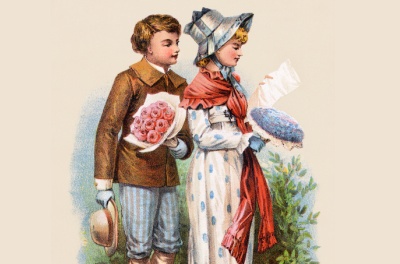
Language Arts – Literature
- Creative Composition (Elementary)
This nine-week course provides students with daily assignments that challenge them to read and analyze a number of selections of literature and create their own composition using what they learn along the way.
- Discovering Poetic Elements (Elementary–Middle School)
Help your students learn how to not only read poetry with confidence but also write their own with Discovering Poetic Elements. Through twenty-four bite-size assignments, this class takes the fear out of writing a poem and guides students through the process of writing a poem in one of many styles.
- Loving Literature through Chapter Books (Elementary–Middle School)
This course helps elementary to early middle school homeschool students develop a love for reading. The staff of The Old Schoolhouse® have selected some of their favorite chapter books to share. Each unit presents a different chapter book, which can be read independently or together as a family, along with discussion questions. Where applicable, the units also help students discover the context for the books, such as background history and geography. These unit studies can be done in any order, with books widely available at most libraries.
- The AMO® Program: Nurturing the Heart for God (Elementary–Middle School)
The AMO® Program: Nurturing the Heart for God uses Biblical and classic literature to cultivate a Christian worldview, sensibilities and character in two generations: the students and the adults who disciple them. This course includes two guides: The Book of Psalms (24 lessons) and Little House in the Big Woods (18 lessons plus a final activity).
- Literature (Elementary–High School)
Adam Andrews, the Director of the Center for Literary Education, offers thirty-five literature studies for various ages. Studies range from picture books to C.S. Lewis classics. Discussion questions can be adjusted to fit the grade level of your child.
- Experiencing Epics and Poetry (Middle School)
Experiencing Epics and Poetry is a basic introduction to various poetic forms for middle school students. Ample opportunities to read and write poetry are included, as well as opportunities to identify numerous poetic elements and devices.
- Fundamental Elements of Literature and Composition (Middle School–High School)
This course combines a study of classic literature with a study of composition, helping students both analyze and create written compositions. Literature ranging from short stories to plays are explored.
- American Literature in Historical Context (High School)
American Literature in Historical Context studies American literature and its development from pre-colonization through the present day. Numerous authors are studied as well as the times and culture in which they lived. Students look at what influenced their writing and how their writing influenced others. Answer keys, assessments, and optional devotionals are included.
- Analyzing Science Fiction Literature from a Christian Worldview (High School)
This course is an exploration of well-known science fiction books that have become classics. It includes novels, short stories, and a few plot summaries. The course begins with a study of the definitions and types of science fiction, as well as some of the common themes in this genre. Your student will continue to learn by reading the books, working through the web activities and explanations, completing written work, and keeping a running list of favorite quotations from each work read.
- Classics of English Literature (High School)
Our Classics of English Literature course, developed exclusively for SchoolhouseTeachers.com, covers 1,500 years of literature, from Beowulf and Chaucer all the way to C.S. Lewis and Agatha Christie. Students experience unique periods of British history through the eyes of the most influential authors of the times.
- Great Books, Part One (High School)
This 17-week class leads your student on an in-depth study of several of the books included in the Great Books of the Western World series published by Britannica. These studies are designed to challenge your student to think deeply and critically about the truths presented. Two short papers and one longer paper (10-12 pages) are also required.
- Great Books, Part Two (High School)
This 18-week class leads your student on an in-depth study of several of the books included in the Great Books of the Western World series published by Britannica. These studies are designed to challenge your student to think deeply and critically about the truths presented. Two short papers and one longer paper (10-12 pages) are also required. Completion of Great Books: Part One is not required.
- Selected Works of Charles Dickens (High School)
This course examines five classic Charles Dickens’ works as well as a biography of the author. Taught by Dr. Steven Hake, the Chair of the Department of Classical Liberal Arts and Director of the Literature major at Patrick Henry College in Purcellville, Virginia, this advanced literature course studies the motivations of author Charles Dickens, his development as an author, and the themes of several of his major works. There are discussion questions in the form of weekly written assignments for the student to complete, along with one-page journal entries and a ten-page final paper.

Language Arts – Writing
- Schoolhouse Spelling (Kindergarten–High School)
Spelling is a lifelong skill. Schoolhouse Spelling homeschool language arts lessons help students of all ages learn to spell well. From kindergarten to twelfth grade, students will enjoy the fun spelling word video presentations that accompany each spelling word list. Activities and lessons vary from grade to grade.
- Beginning Listening and Speaking Skills (Elementary)
Teaching beginning communication skills with early learners provides a firm foundation that will help them throughout their lives! Basic speaking and listening skills can also boost self-confidence in many daily routine settings and activities. This course helps you build your child’s listening and speaking skills through thirty simple activities.
- Adventures in Writing (Elementary)
Adventures in Writing is a fun-filled writing unit for ages 8–12. It includes easy-to-follow Teachers Notes, student worksheets, farm animal printables with fun facts, farm animal report pages with questions to answer, fun writing activities, and unit study ideas to incorporate science and art. Join Daisy the Duck and Moo-Cow Mayor in Mooville and get ready for a zany writing adventure!
- Elementary Writing with Structure (Elementary)
This elementary writing course is designed to engage students’ imaginations and teach them to transform their imaginings into written form, to teach the basics of writing a variety of fiction and non-fiction styles, and to guide students in the writing process.
- Schoolhouse Grammar (Elementary)
This homeschool grammar curriculum is divided into five grade levels and can be used as a full year of grammar or as additional practice and review for elementary students. Each grade level includes basic grammar skills, such as parts of speech, sentence construction, synonyms, antonyms, and more.
- Everyday Copywork (Elementary–Middle School)
Everyday Copywork brings your student penmanship practice, in both print and cursive, through copying Bible portions, excerpts of literature, foreign language selections, and much more. With more than 175 copywork selections, opportunities for penmanship and optional memorization are expansive. The selections vary in length and difficulty, so the coursework is suitable for many ages.
- Daily Grammar for Middle School (Middle School)
This homeschool grammar curriculum provides weekly practice sheets with a Bible verse, Bible fact, or sentence about Christian life, for middle grade students to identify parts of speech, practice proper grammar, and understand sentence construction.
- Benjamin Franklin Writing Method (Middle School–High School)
Benjamin Franklin had limited educational opportunities, but he became one of the literary lights of the nation. In this 24-week course, students follow in Benjamin Franklin’s footsteps by borrowing his step-by-step study method to improve writing. Each lesson offers a different selection to study. Topics include active reading, notetaking, narration, analysis, and writing in a variety of literary genres.
- Classics-Based Writing (Middle School–High School)
This course teaches middle school and high school students to recognize excellent writing, understand various literary terms and techniques, and expand vocabulary. Students use copywork, analysis, and transformation of the work copied, then finish by creating their own work. Each unit introduces a short, classical work as a means to encourage students to create independent works of literature.
- Essay Writing 101 (Middle School–High School)
Essay Writing 101 looks at the writing process and studies common essay forms including expository, biographical, descriptive, personal experience, eyewitness report, and cause and effect. It investigates the purpose and elements of each and provides rubrics for self-evaluation.

Logic
- Logic (Middle School–High School)
Through the written instruction, examples, assignments, and quizzes contained in this homeschool logic curriculum, teens learn to analyze statements, advertisements, and arguments and to identify faulty reasoning contained in each. Common fallacies discussed include the appeal to pity, appeal to fear, begging the question, hasty generalization, and many more.
- Geometry in Real Life (High School)
Geometry is logic in action. This course delves into what the formulas presented mean and how they were created. It focuses on real-world applications and provides fun and inventive ways to learn the math rather than just memorize it. In addition, the course features an entire unit devoted to the mathematical field of logic.
- Unbreakable Faith: Assurance in a World of Unbelief (High School)
How’s your worldview? Is it prepared for a culture where Christ, Scripture, and everything you believe will be ridiculed and challenged? Are you ready for colleges’ sophisticated arguments against faith in Christ? Discover an intellectually defensible and God-honoring worldview for you and your children, and develop a truly Unbreakable Faith.
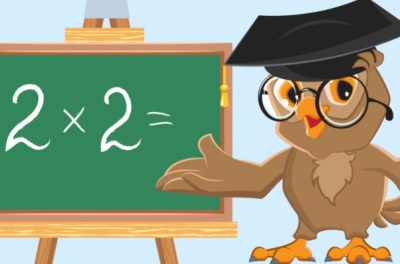
Math
- Daily Math (Elementary—Middle School)
Daily Math contains worksheets on a variety of math topics that you can incorporate into your regular math program to use as additional practice or as speed drills. These printable pages can be used once or multiple times as your student works on improving skills in arithmetic functions, fractions, decimals, patterns, word problems, money value, and much more.
- Let’s Do Math Outside (Elementary)
These fun supplements are perfect for any time you want to grab some schoolwork and head outside! Whether you are counting bugs, photographing 3D shapes, discovering angles, or going on a weights and measures scavenger hunt, you’ll find dozens of worksheets ready to print and take outside!
- Multiplication and Division Practice Unit (Elementary)
The Multiplication and Division Practice Unit is designed to help parents teach students multiplication and division through examples and practice problems. It is a great review unit for an elementary math class and can be done at the student’s own pace.
In addition to many other math courses and workshops, SchoolhouseTeachers.com offers a full line-up of grade-level math courses.
- PK: All About Shapes
- PK: Preschool Playground: Numbers, Patterns, and Cognitive Skills
- K: Building a Foundation with Kindergarten Math
- 1: Starting Out with First Grade Math
- 2: Stepping Up with Second Grade Math
- 3: Stretching Higher with Third Grade Math
- 4: Strengthening Skills with Fourth Grade Math
- 5: Steaming Ahead with Fifth Grade Math
- 6: Staying Sharp with Sixth Grade Math
- 7: Pre-Algebra
- 8: Algebra 1
- 9: Geometry in Real Life
- 10: Algebra 2
- 11: Trigonometry and Statistics
- 12: Precalculus
- 12+: Intro to Calculus: Derivatives and Integrals
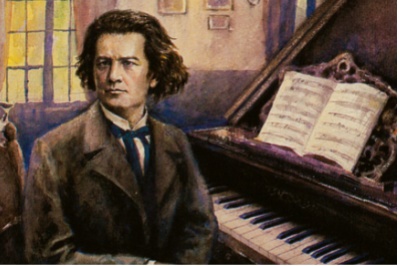
Music
- Appreciating the Gift of Music (Kindergarten)
This fun introduction to music class for kindergarteners focuses on helping children enjoy music. There are lessons about instruments (including their own bodies!), three well-known instrumental pieces, and the difference between rhythm and beat. Ample instruction and guidance is provided for the parent so you can confidently enjoy sharing this course with your children even if you don’t know an accordion from a xylophone.
- Great Musicians (Elementary)
This course is based on a series of short books originally published in the early 1900s about twelve great musicians. Each book is written in simple, easy-to-understand language that brings the musicians to life for the readers. Each book concludes with simple comprehension questions and an optional story activity.
- If It Isn’t Baroque . . . The History of Western Music (Elementary–High School)
This twelve-week course explores the history of Western music from ancient times through modern day. The topics include the origins of music, music styles from history, key composers and developments in music history, and differences in various music genres.
- Music Theory I & II (Elementary–High School)
Music is a language, and in order to fully appreciate it, one first needs to understand how it works. Each sixteen-week course teaches key terminology and concepts in music theory and illustrates these concepts with pieces of classical music. Age-appropriate assignments are offered for primary and secondary students.
- Composing with the Masters (Middle School–High School)
Composing with the Masters is an advanced music course designed to help students recognize elements in compositions from various masters and begin to incorporate them into their own musical compositions. Composers from medieval through modern times are studied.
- Advanced Music Theory (High School)
This advanced music theory course is designed for the student who has already mastered the skills presented in Music Theory I and II. It explores scales, intervals, chords, and modes, providing students with a firm understanding of music theory.
- Music Throughout History (High School)
In Music Throughout History, students study the history of music from the medieval period through modern times. The course begins with a look at music around the world and then moves to a study of how music in America has changed and developed over time. Both famous and lesser-known composers and hymn writers are studied.
You might also consider:
- Unit Studies: Schoolhouse Music Recorder Lessons (Grades 1–3)
- Beginner Drum Lessons (Elementary–High School)
Through text and video lessons, this course teaches students to play the drums while also helping them understand the elements of music such as melody, harmony, and rhythm. - Beginning Violin (Elementary–High School)
This Beginning Violin course will have you and your children learning to play the violin before you know it! Thirty-three video-based violin homeschool music lessons introduce homeschool students of all ages to beginning skills in handling and playing the violin. - Guitar (Elementary—High School)
Twenty-eight weekly lessons use video and written material to help students with an interest in playing the guitar develop a strong foundation of skills on which to build.

Science
- Creation, Nature, and You (Elementary)
Creation, Nature, and You is a video-based supplement to an elementary science class. Students will take a closer look at seeds, soil, trees, fruit, and the wilderness in these eleven video specials.
- Let’s Do Science Outside (Elementary)
With over seventy-five science activities to choose from, students can complete fun outdoor learning activities such as building a hotel for bugs, designing a flower, taking a sycamore seed helicopter flight challenge, and more.
- Everyday Astronomy (Elementary–High School)
Starting with the sun and moving out from there, “Professor Light” shares 180 bite-sized astronomy lessons that introduce students to the wonders of God’s universe. Activities such as observing the stars, creating tasty snacks, and more are included.
- Geology (Elementary—High School)
Audio/video slideshows and weekly worksheets help students discover the amazing world that God has created. Unit 1 covering Rocks and Minerals offers sixteen weekly lessons explaining how to identify various types of rocks, the roles each type of rock plays in our world, and how geology points to a Creator. Unit 2 covering the Geology of Our National Parks also offers sixteen weekly lessons. From glaciers to volcanoes, explore the vast wealth of geology found in the United States National Park System.
- Chemistry: All Things Matter (Middle School)
The Chemistry: All Things Matter homeschool science course is a 12-week course that helps middle school students explore concepts about matter. First, they discover how matter exists and changes. Using this basic understanding, the student advances in learning to determine the states of matter, physical reactions of matter, and how different types of matter combine (or do not combine) in everyday life. Vocabulary, reviews, and an exam are included, along with experiments which should be overseen by a parent.
- Introduction to Physics: Middle School (Middle School–High School)
Introduction to Physics: Middle School is an educational and entertaining Physics course designed especially for homeschoolers with hands-on activities and experiments to bring concepts to life. This eighteen-week course provides an introduction to gravity, friction, velocity, acceleration, Newton’s laws, electricity, magnetism, and more, while having more fun than you ever thought possible.
- Animal Science (Middle School–High School)
This Animal Science homeschool curriculum is for middle school and high school students who want to learn more in-depth information concerning animal species, habitats, and care. Taught by a practicing veterinarian, twenty-seven weekly lessons cover animal classification, digestive systems, reproduction, food animals, companion animals, human responsibility toward animals, and preventative care in domestic animals.
- Botany: Plant Science and Field Studies (Middle School–High School)
In this course, students learn about the parts and functions of plants–including leaves, roots, stems, fruits, and flowers. They examine various aspects of botany plant science, including the different methods of reproduction and growth within the plant world, along with methods of classifying plants. Students explore a variety of environments in which plants are found and learn about adaptations that allow plants to thrive in certain habitats through their own field study of plants.
- Earth Science (Middle School–High School)
Earth Science is a full-year course designed for students in grades 7-9. Each session consists of three different types of activities: video lessons to watch, notes for the student to fill out as he/she watches the video lesson, and a worksheet to complete that will help the student study for the quiz. Quizzes, as well as answer keys, are provided. The course explores aspects of geology, oceanography, meteorology, and astronomy.
- Advanced Chemistry (High School)
This advanced chemistry course covers all the basic topics of general chemistry. As an advanced course, it is suitable for grades 11-12 and would be best appreciated by a student who has already had a basic introduction to chemistry. This course includes approximately 25 hours of video instruction, supplemental readings, extensive practice exercises, and answer keys.
- Life Science (High School)
This full-year high school science course studies the basic topics of life science including the scientific method, molecules, organic and inorganic compounds, cell structure and function, cell division, plant and animal tissue, support and transportation systems in plants and animals, biospheres and ecosystems, biodiversity, and classification.
- Exploring God’s World with Kindergarten Science
- Exploring God’s World with First Grade Science
- Exploring God’s World with Second Grade Science
- Exploring God’s World with Third Grade Science
- Exploring God’s World with Fourth Grade Science
- Exploring God’s World with Fifth Grade Science
- Exploring God’s World with Sixth Grade Science
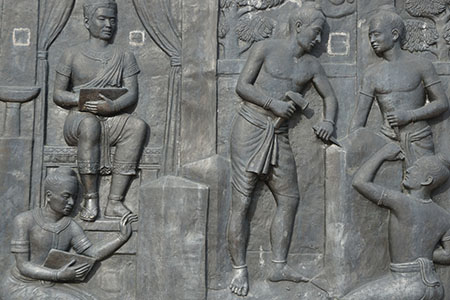
Social Studies
- Ancient Citizens in Ancient Civilizations (Elementary–Middle School)
From oligarchies to democracies and republics to monarchies, the nations of the world have tried many forms of government. This course can be done as a short stand-alone unit or alongside a history class to highlight a few of the ways man has attempted to govern himself, what has worked, and what has not. A brief look at parliamentary procedure and the Christian foundation of the United States is also included.
- Constitution and Bill of Rights (High School)
This class about the Constitution and Bill of Rights is taught by a practicing attorney and judge. Sixteen weekly lessons contain analysis and study of the Constitution and Bill of Rights, prompts for independent study, term paper assignments, and exams. A Teacher’s Handbook and answer key is included.
- Free Market Economics (Middle School–High School)
This twenty-four week course is an in-depth study of Austrian economics and its application in the real world, complete with assigned readings (many sources available free online), video lectures, quizzes, exams, and essay prompts. It is designed to be taken as a .5 or higher economics credit (depending on the amount of work completed).
- Free Men and Free Markets: Government and Economics (High School)
This five-lecture course will give you a Biblical understanding of how man satisfies his material needs, how the market system works, how the free market differs from socialism, how government and economics intersect and how the Bible answers severe economic problems like poverty and injustice.
- Elementary Economics for First Grade (Elementary)
- Elementary Economics for Second Grade (Elementary)
- Elementary Economics for Third Grade (Elementary)
- Elementary Economics for Fourth Grade: Global Economics (Elementary)
- Elementary Economics for Fifth Grade: Interdependent Economics (Elementary)
- Elementary Economics for Sixth Grade Currency and Its Impact (Middle school)
Featured Resources
Need to expand your study skills? Looking for ideas to take notes effectively? Be sure to read Study Skills and Notetaking Tips in our Various Unit Studies. Learn how using multiple learning pathways enhances memory, experience taking notes in various live and online situations, and even get bonus tips on how to memorize a script for live performances. Suitable for grades 6–12.
Looking for more information about Biblical Classical Education? Be sure to read this in-depth, Homeschooling Methods eBook from The Old Schoolhouse® Magazine for guidance about what Classical Christian Education is. Included is a bonus section about Charlotte Mason Education as well.



